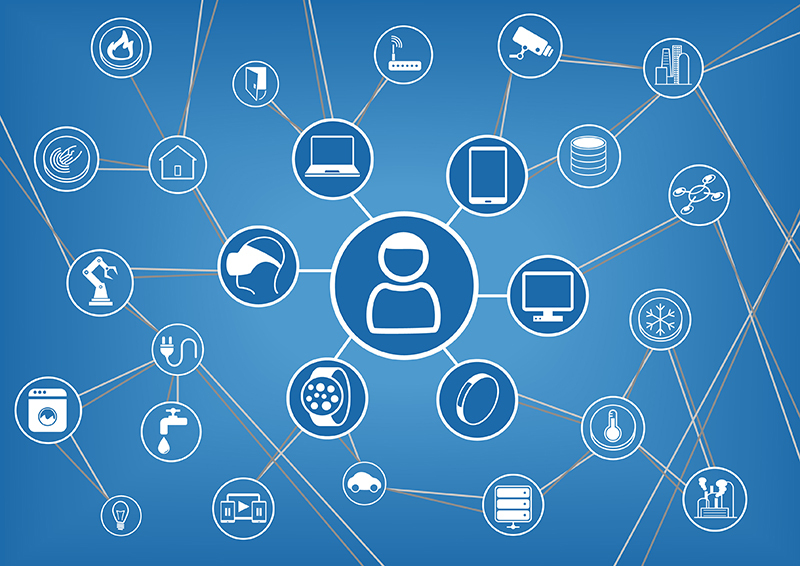One of the most disruptive technologies in computer science today is not a sexy smartwatch, a high-resolution screen or a driverless car – it’s a distributed public database that maintains a growing list of transactional records, protected against tampering or revision.
Cryptocurrencies like Bitcoin and Dogecoin have blockchain to thank for their rise in prominence. By building a decentralised ledger that allows legions of globally networked computers to act as a sequential spreadsheet of transactions, blockchain has kick started a revolution in banking and business.
Most talk of blockchain in the context of these new currencies, but an interesting movement is afoot which will see the concept applied far more widely – and its first task may be supporting the very fabric of the Internet Of Things.
Devices under pressure
According to Cisco, 50 billion devices are due to come online by 2020. With so many connected gadgets all sending, receiving and processing instructions to turn on, dial down and move up, the sheer amount of data due to come on-stream could come with huge costs.
Servers that will handle the data produced not just by users but by homes and workplaces may buckle under the extra load.
>See also: Just paranoid? We break down the top three Internet of Things conspiracy theories
And consumers already spooked by recent online services data breaches will be even more concerned about theft of their domestic or bodily data – but continuing to use conventional server architecture will do little to soothe their worries.
An answer may be in sight. Just as it has powered a currency revolution, blockchain could also be used to process the rapidly growing amounts of data being generated by internet-connected devices.
This isn’t just a theory. IBM and Samsung have already started to develop Autonomous Decentralised Peer-To-Peer Telemetry (ADEPT), an Internet Of Things system that uses a universal blockchain as its backbone, so that all connected devices can broadcast instructions to each other. And the system even has its own currency, Ether, which devices use to purchase units of computing power that make them tick.
Processing IoT instructions in a distributed fashion could seemingly solve both of its looming challenges: reliability and privacy.
Spreading the processing load across nodes would eliminate single points of failure, creating a more resilient ecosystem for devices to run on.
And although blockchain ledgers are public, they are highly fortified using cryptographic algorithms. On a blockchain-powered Internet Of Things, consumer data would be more private.
The true cost
But, whilst the dream is exciting, the execution may not be so dreamy.
Powering the Internet Of Things by blockchain will make for a powerful problem – one that could even harm the environment. Because distributed, blockchain processing works by computers (known as miners) solving cryptographic puzzles over and over again, it is many times more processor-intensive than that carried out on conventional servers – and that is going to require a lot more electricity to power everything.
To foretell that future, look to Bitcoin today. Vice’s Motherboard estimates that the Bitcoin network consumes 210MW in power, the equivalent of 173,000 US households’ daily electricity usage, with each Bitcoin transaction gobbling up the same power 1.57 homes do in a whole day.
Whilst decentralisation provides many benefits, the largest issue with it is that it creates inefficiency. Reproducing the same transaction across a network of devices clearly has benefits but is incredibly wasteful.
When read about decentralisation, the utopian vision is that of a world where all devices contribute small amounts of mining power to the network and everything from your watch to your toaster are processing transactions on a micro scale.
The economics of this strategy seem somewhat flawed – the efficiency of any miner built on a small scale will inevitably be inferior to large scale miners that are built to harness economies of scale and are placed in geographies where power is plentiful and cost effective.
This is exactly what has happened as the Bitcoin network has flourished, the ‘garage miners’ that were the first peers on the network have largely made way for industrial-scale, professionally run mining factories in places like Iceland.
These miners have created some centralisation in an otherwise decentralised system. Ultimately the market has gravitated towards efficiency.
Suddenly, moving the instructions for a thermostat, smart lock or factory floor monitor into a blockchain network that is truly distributed doesn’t seem so attractive – at least, not if you care about the environment and about the cost of the power you will need.
These costs are just the start. According to Allied Control, a manufacturer of server cooling systems, “The global power required for mining-devices has grown 147 times in the past year alone. Cooling energy, the power required to keep mining devices and mining farms cool, is estimated to account for an additional 30-50% on power consumption globally.”
>See also: From ballot box to Bitcoin: how Blockchain technology could revolutionise age-old paper voting
True, strides have recently been made in blockchain efficiency – new miners are increasingly choosing servers with more efficient, ASIC chips over conventional GPUs. But all of the power saving is likely to be offset by increased demand. Clients will find it hard to evade the increased power costs that will come with a blockchain-powered Internet Of Things.
All this may at least place at an advantage those large scale miners locating their servers in geographies with plentiful access to naturally-sourced electricity – like Norway, New Zealand and Iceland – whose services will naturally come cheaper than others’.
But not all vendors will embrace this opportunity. So, whilst the idea of blockchain easing the IoT strain is appealing at first, when the rubber meets the road things are not so palatable. That’s why the industry should think long and hard about the real cost of efficiency before jumping into the connected-device future.
Sourced from Furhaan Khan, Verne Global







